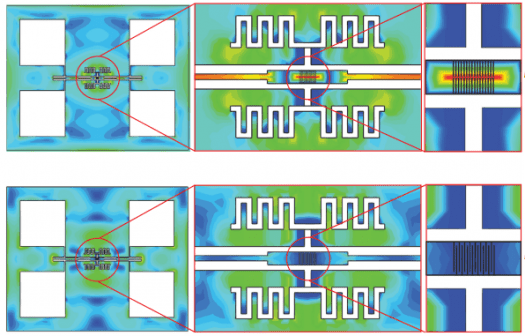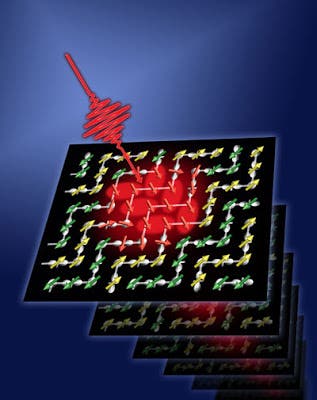In the popular TV series, Star Trek, one of the most fascinating devices featured, out of the whole myriad of blasters and tractor beams, is the tricorder, a portable medical scanner and communication device which could detect biological phenomena such as increased blood flow around tumorous growths just by sweeping a person. The closest thing to such a device might come subsequent to a recent remarkable research which discusses a novel way of creating electromagnetic Terahertz (THz) waves or T-rays, which are stronger, render a more efficient continuous wave, and can operate at room temperature making them ideal for portability. A T-ray device could effortlessly tell if a person is suffering from cancer or is carrying drugs, all through a simple scan – just like the tricorder. “Fascinating!” would exclaim Spock.
T-rays, which are waves in the far infrared part of the electromagnetic spectrum that have a wavelength hundreds of times longer than those that make up visible light, are currently in use by full-body security scanners. You see, T-rays can go places where optical scanners can’t even scratch the surface, in fact T-rays go straight thorough the surface – paper, cardboard, people, almost anything. Every molecule the T-ray penetrates has a unique signature in the THz range, which the scanner can sense. So, cancerous tumours and living DNA, explosives or drugs, could be easily identified almost instantly. There are currently a number of issues with these scanners at the moment, though – among other, they’re extremely expensive, require a tremendous amount of energy and require low temperatures for operation.

The new design developed by scientists at Institute of Materials Research and Engineering (IMRE), a research institute of the Agency for Science, Technology and Research (A*STAR) in Singapore, and Imperial College London in the UK, produces a strong beam of T-rays by shining light of differing wavelengths on a pair of electrodes – two pointed strips of metal separated by a 100 nanometre gap on top of a semiconductor wafer. This structure greatly enhances the THz field and acts like a nano-antenna to amplify the wave generated by the interaction between the electromagnetic waves and the light pulses. The T-rays can even be tuned to create a constant beam, which would be required for a T-ray scanner, and also the setup is two orders of magnitude stronger than existing THz systems.
“The secret behind the innovation lies in the new nano-antenna that we had developed and integrated into the semiconductor chip,” said Dr Jing Hua Teng, from A*STAR’s IMRE.
Besides operating at room temperature, the new design is extremely tiny compared to the current behemoth T-ray scanners – it’s actually small enough to be integrated into common silicon chips. So why is this not the next big thing yet? Well, the research was just recently published in the latest edition of the journal Nature Photonics, but rest assured within a few years, the reserachers’ findings will materialize into the next generation scanners. Fascinating …. and scary!
“T-rays promise to revolutionise medical scanning to make it faster and more convenient, potentially relieving patients from the inconvenience of complicated diagnostic procedures and the stress of waiting for accurate results. Thanks to modern nanotechnology and nanofabrication, we have made a real breakthrough in the generation of T-rays that takes us a step closer to these new scanning devices. With the introduction of a gap of only 0.1 micrometers into the electrodes, we have been able to make amplified waves at the key wavelength of 1000 micrometers that can be used in such real world applications,” said Research co-author Stefan Maier.




